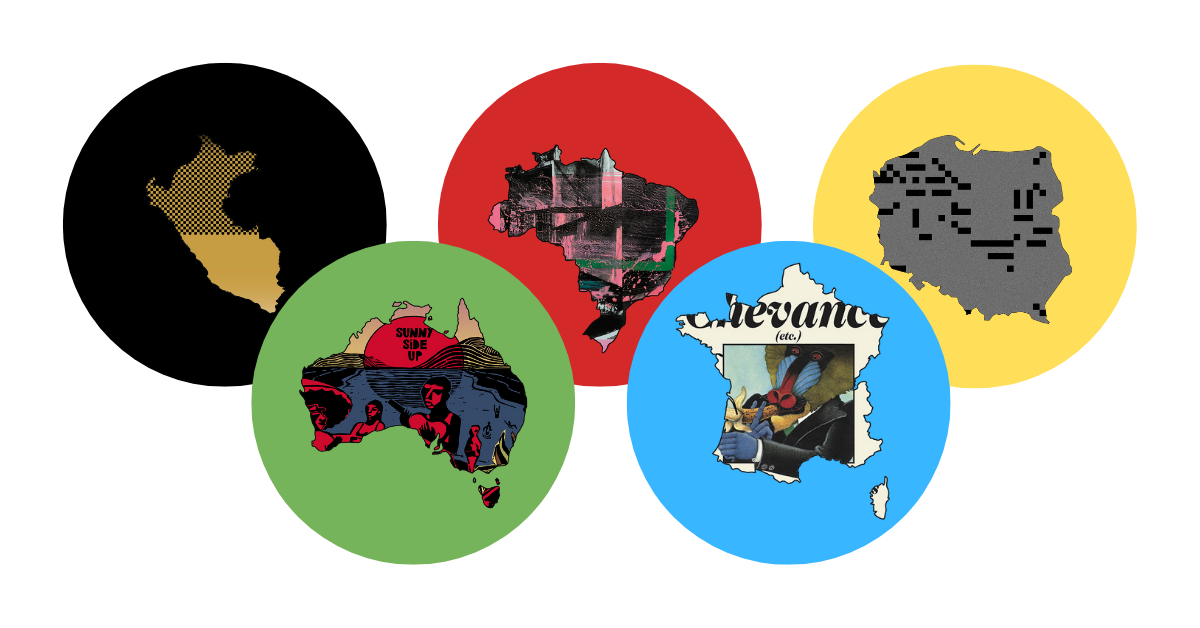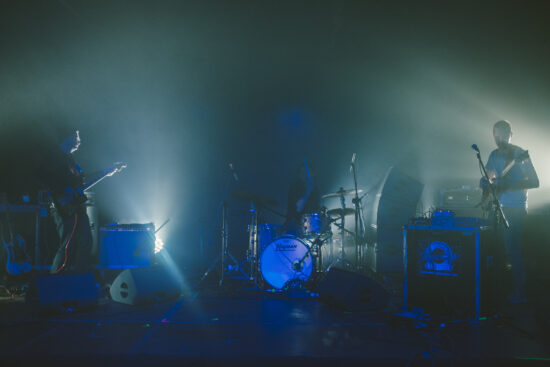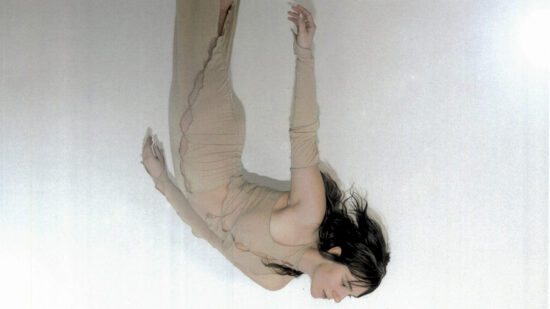Travel to 1980s Brazilian underground, Peruvian sound-art, French children’s music, Melbourne’s blossoming jazz scene and Wrocław’s futuristic electronica. This is the first in a new series where I describe the most interesting compilations I’ve come across.
Translation: Aleksandra Szkudłapska
If truth be told, I’m rarely interested in compilations. Assorted sets of tracks bring to mind “Greatest Hits”-style records once found in the discount section of music shops, issued solely for economic profit. That’s why I hardly ever pay attention to them. Unless they’ve been made with a specific idea in mind: to showcase a scene or genre or bring to light forgotten archive materials. With this in mind, I’m embarking on a new irregular series, where I’m going to present unique compilations released in various parts of the world, all of which are totally worthy of your attention. Not only for summer holidays!
Outro Tempo II: Electronic And Contemporary Music From Brazil 1984-1996, Music from memory
The Brazilian compilation is a counterpart to the amazing record issued two years ago. Back then, Music from Memory took us on a musical journey to the years 1978-1992. While the dates here seem to partially overlap, the selection of music is markedly different. The first compilation seemed more experimental and diverse – right now, even when we do come across new ideas, this usually happens within a synthpop song structure. A nice, original nod towards the pioneers of dance electronica is Dequinho E. Zaba’s “Preposições”. While earlier on, the music oozed mystery, understatement and was packed with unobvious solutions, experimenting at the intersection of various scenes, we are now transported to Brazilian metropolises to experience the birth of alternative, sophisticated pop, uniting modern sounds, folk influences (Priscilla Ernel’s “Americua”) and pulsating beats backed with beautiful vocals (Jorge Mello’s “A Natureza Reza”). This forms an interesting contrast to disco-friendly tracks composed using a broad array of ornamentation (May East “Maraka” and AKira S “Tokei”). While these recordings are quite distant to Brazil’s usual music export crop, they brilliantly showcase an independent genre that appeared after Música Popular Brasileira became commonplace and lost its impetus – born in indie clubs and at grassroots parties, self-produced, and combining the world of music with that of art. This is not just a different tempo, as the title suggests, but a different reality and approach to music. The compilation offers a colourful documentation of a flourishing Brazilian scene, the existence of which may have been a mystery to many.
Grabar y Coagular – A history of audio pieces by Peruvian artists (1972-2018), Buh Records
Buh Records, my favourite label in recent months, has released a compilation that, from the very first seconds, draws you into experimentation and sound play. A history of audio pieces by Peruvian artists (1972-2018) collects recordings spanning almost four decades, although the focus is largely on those made in recent years. It features a diverse mix of sound art and radio dramas, most of them short, which gives the feel of a database of samples and ideas. The opening “Colores” by Jorge Eduardo Eielson is a vocal play, where the names of colours are pronounces aloud, one by one – each with a different intonation. The raw, natural piece is in stark contrast with the second one, the mechanised “Chullachaqui Inteligencia Artificial Parlo?” by Francisco Mariotti, who had already been interested in AI back in the 1980s. While many recordings interfere with vocals and voice, Elena Tejada-Herrera’s “Memoria colectiva” is a recording of demonstrations and gatherings, while Paola Torres’ “Re(a)signaciones temporales” and Daniel Jacoby’s “Für Elise de Ludwig van Beethoven en orden de tono” represent the most music-oriented fragments of the compilation. Buh Records showcase a rich array of sound explorations from Peru – I’m just a little disappointed the focus isn’t oriented towards the more distant past, when available technology was really very different (only two tracks on the record were made before 2000). All in all, though, the compilation represents a unique catalogue of ideas and amazing artists, whose tracks are supplemented with detailed descriptions, allowing listeners to gain a more in-depth perspective on Peru’s experimental scene. This release can definitely break down many a stereotype about South American music.
Sunny Side Up, Brownswood
The new jazz compilation released by Brownswood is a follow up to last year’s We Out Here (which, just a few days ago, also took shape as a festival). This time, Gilles Peterson’s label travelled far and wide, leaving London behind and focusing on what’s going on Down Under. Most importantly, like in the first compilation curated by “one of our own”, i.e. Shabaka Hutchings, here too the selection has been made by a member of the scene, Silentjay. This is not a series of random tracks, but the result of a week-long session in The Grove studio, where band after band came in to document their compositions. The nine tracks ooze vibrant group energy; music-wise, they seem to be more radio-friendly and less edgy than their London-based predecessors, perhaps because of the added soul, r&b, samba and funk influences. There’s no room for jazz improvisation and experimentation here, unless we’re talking strictly about the production and sound layer. Nevertheless, the whole makes for a very interesting listen: track after track reveals new layers of the amazingly warm sound that permeates this record. Phil Stroud’s amazing orchestral rapture in “Banksia” is counterbalanced moments later by Dufresne’s “Pick-up/Galaxy”, slightly reminiscent of Prince. In turn, Kuzich’s “There Is No Time” is an oneiric vocal journey, shrouded in smoke and powered by hip-hop rhythms. In “The Wake-Up”, Horatio Luna wanders far outside the usual jazz territory, serving a tropical and refreshing tour of disco house, while the closing ”Orbit” by Allysha Joy from the 30/70 collective offers a more soul take on spiritual jazz. Until now, I’ve mostly associated Australia with The Necks, Nick Cave and Mike Majkowski – this musical journey is a perfect opportunity to delve into other musical regions.
CHEVANCE (etc.) – Outremusique pour enfants 1974-1985, Born Bad
Chevance used to be an intriguing French label, most famous for its amazing children’s music. Original instrumentation and arrangements, compelling melodies, colourful narratives, often verging on experimentation and puns coined by French poets – because of all of the above, music made by the likes of Anne et Guilles, Steve Warning or Le Groupe Organon still makes for an amazingly pleasant listen, bringing to mind theatre production soundtracks or radio dramas, where each detail and second are important. I won’t pretend I’ve been familiar with this label for a long time – I found out about it from fellow music journalist Bartek Chaciński, mostly thanks to the brilliant compilation CHEVANCE (etc.) – Outremusique pour enfants 1974-1985, which has just been released by France’s Born Bad Records. I basically can’t get to grips with what’s going on this record. There’s room for experimentation in the vein of the Polish Radio Experimental Studio (“Sucre Candi” by Jean-François Gaël), orchestral jazz arrangements (Steve Waring’s “Image”), acoustic ballads (“Le Gnou” by the duo Anne et Gilles) or avant-garde, sound-art games based on sounds and words (Alain Savouret’s “La dictée”). And yet the objective here was not avant-garde experimentation as such, but making music for the youngest listeners. As I listen to this compilation, I’m astonished that these compositions were in fact originally intended for children – many a grown-up would be completely hooked. I know I am, every time I listen to this selection (which is also beautifully released). Chapeau bas, Born Bad Records!
Grids 1, Outlines
Paweł Dunajko is my go-to person whenever I want to check out the best and latest in footwork. His Wrocław-based label Outlines offers a home to representatives of the genre hailing not just from Poland, but all over the world. Yet it also ventures beyond this particular aesthetics, which is best exemplified by its latest release, a compilation titled Grids 1. The record showcases various different, original approaches to electronic music, created by artists united by their intriguing take on rhythm. The opening track, “77” by Sauceman, draws you in with its simplicity, boisterous rhythm, synthesizer waves and sampled chirping of birds. It is followed by something murkier and more industrial: Avtomat’s “A mess”, which is then contrasted by a more rave track by Dj Girl. Ostrowski, with his broken, pulsating bass, has an eye for detail, while Automatisme also sounds really interesting: the slightly mechanical, watered down sound occasionally verges on the new age. Yet the best comes last: CRZKNY has made a complex suite, which combines deep bass, simple rhythms and electronic ornaments that bring to mind Four Tet’s early works. What is more, the deeper you get into the track, the more there is going on, like in a lengthy, colourful epic. The piece is rich on the details, and the 20 minutes fly by without you even noticing the passing of time – this is an evocatively developed, colourful musical history, backed by a changing rhythm. Outlines has already carved out a place for itself among leading labels showcasing the most interesting electronica from the whole world. Grids 1 proves it’s adamant to stay there.




